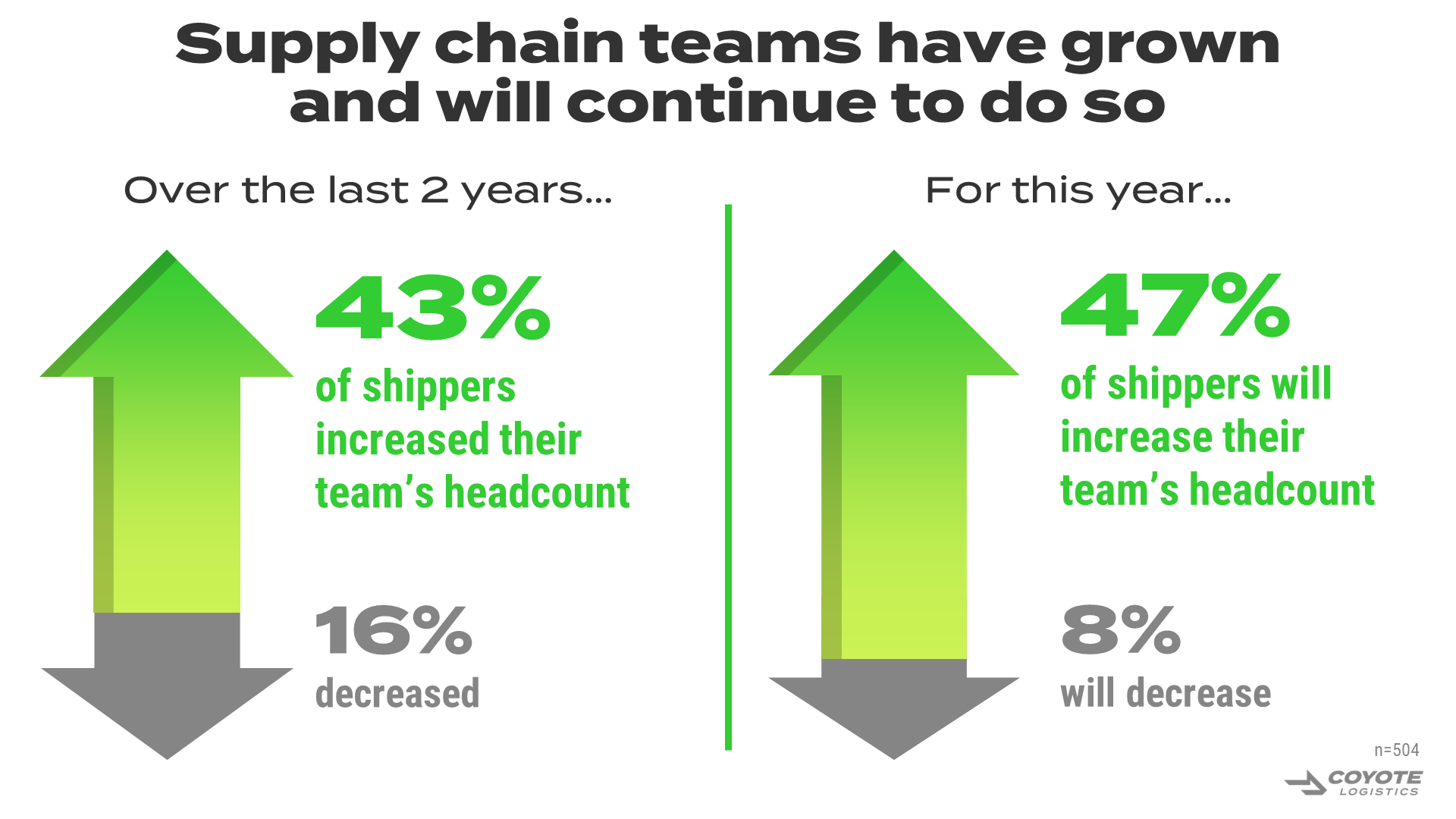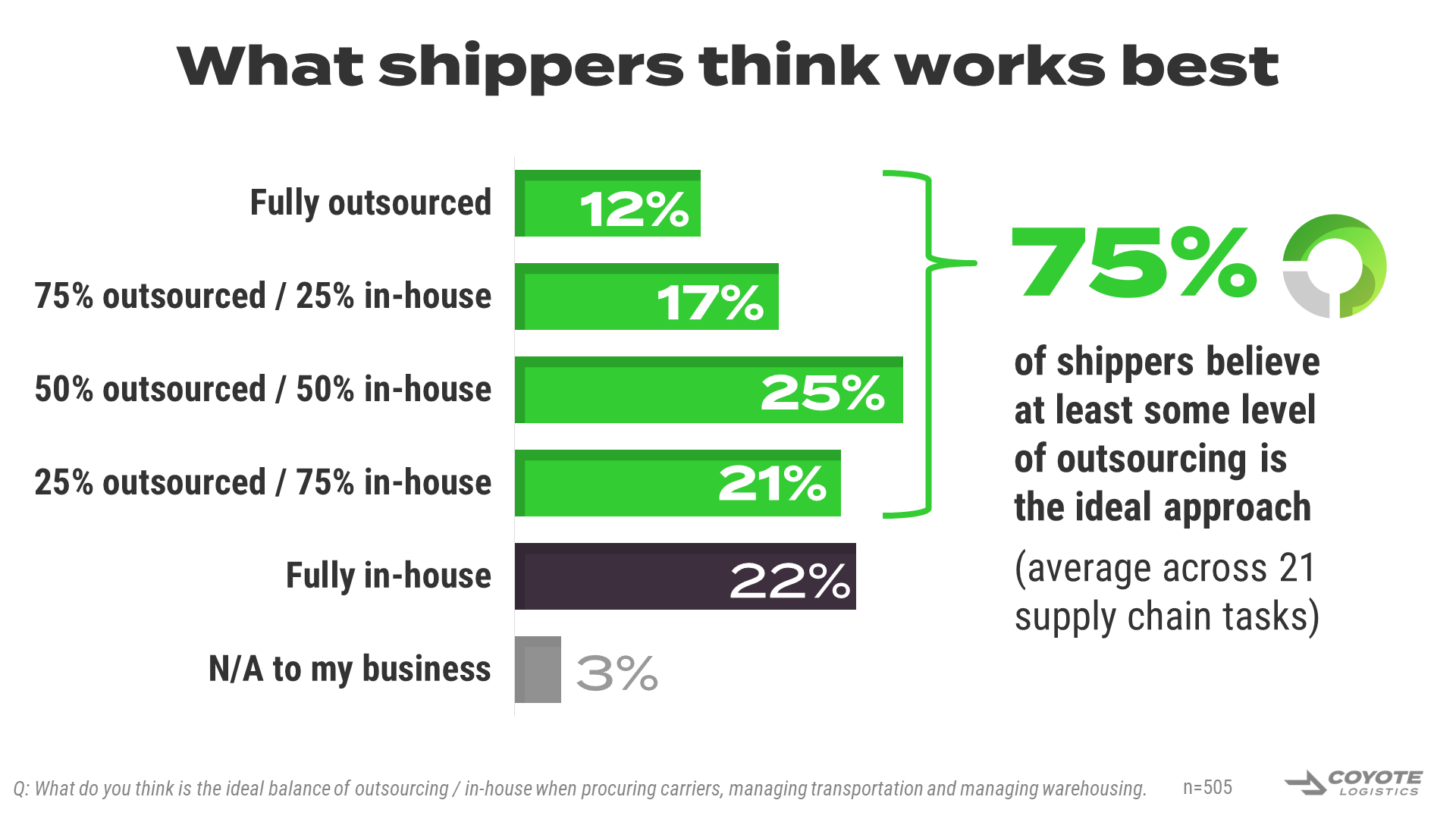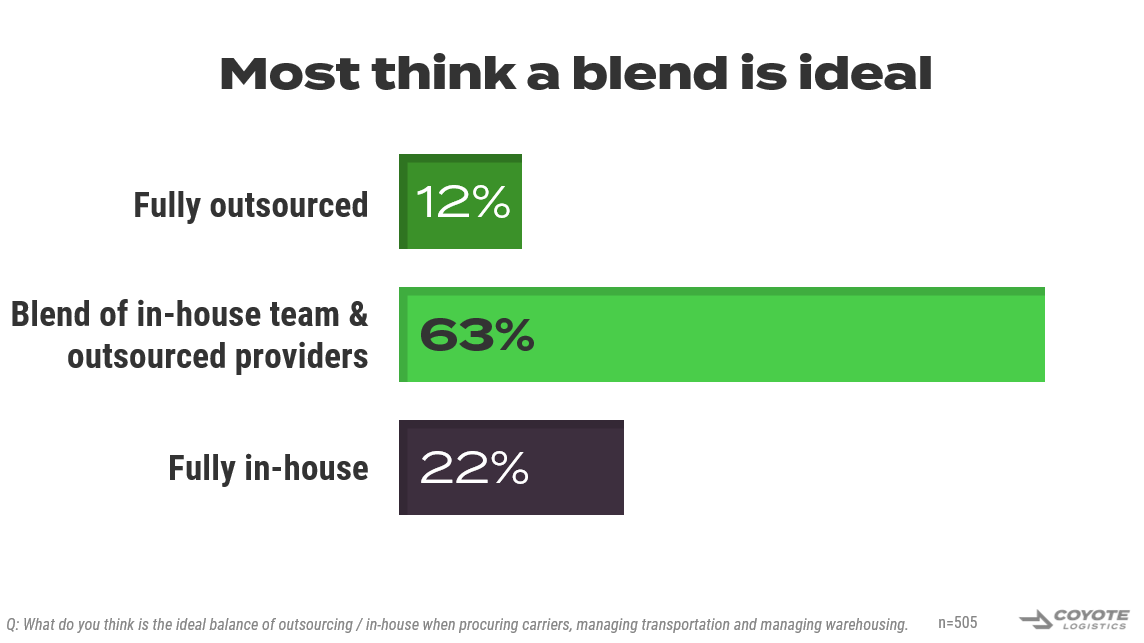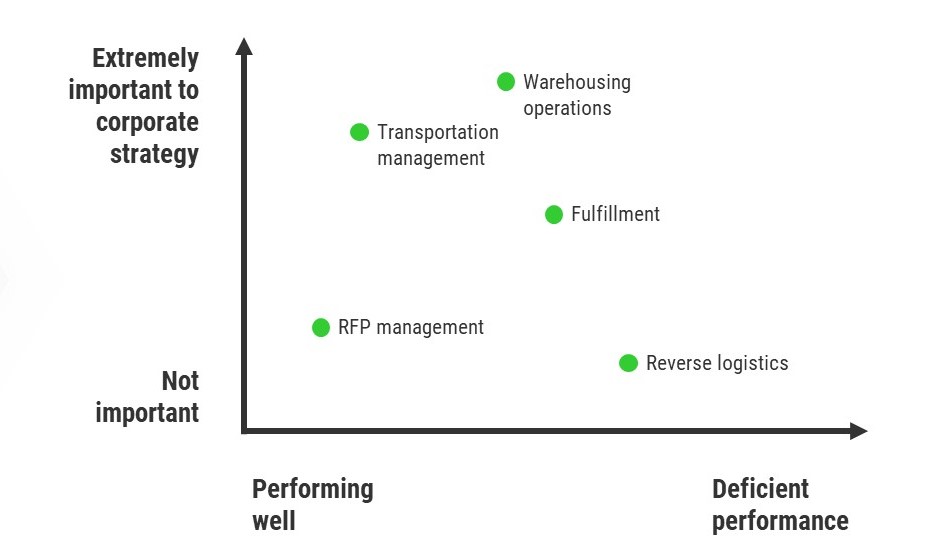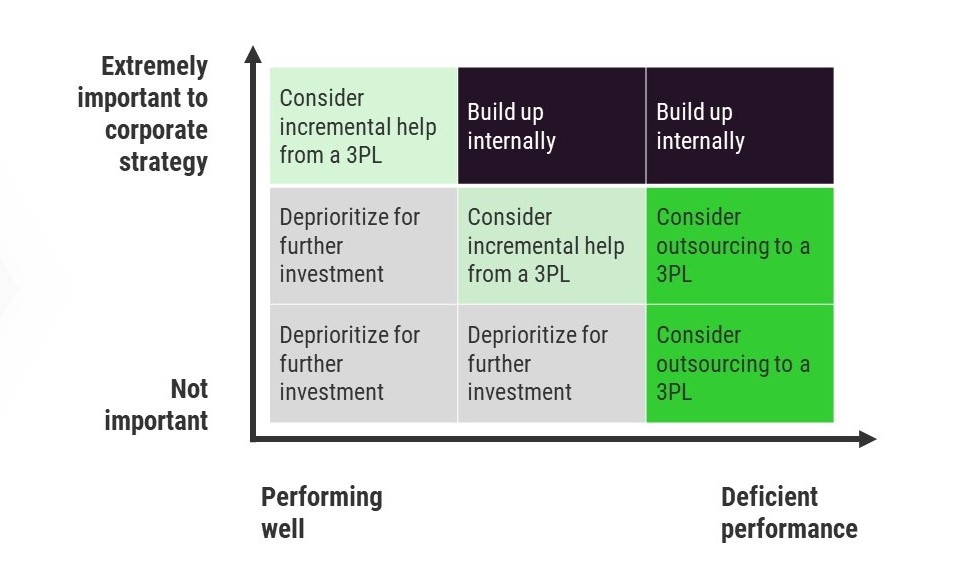Taking a Both/And Approach to Supply Chain Outsourcing
It’s easy to think of supply chain outsourcing and in-house as a binary, black-and-white decision.
Either we’re going to staff up and do this ourselves, or we’re going to hire a 3PL and have them handle it.
But the reality of how this actually plays out in most companies’ operations is much grayer — at least that’s what 500 shippers told us in our recent research study on supply chain outsourcing (and what I’ve seen in years of working with shippers).
There is an incredible amount of diversity in how companies approach supply chain management, necessitated by the intricacies of their products, customers and vendors.
However, if we can identify one theme that holds true across company size and industry, it’s that you need both in-house expertise and a strong 3PL base to succeed.
Using a few of the insights from our recent study, I’m going to make a case for in-house, a case for outsourcing and argue that, ultimately, a combination is the best method.
Strike While the Iron Is Hot
For years, I’ve seen customers excel who think about supply chain as a competitive advantage rather than a cost center.
While others get whipsawed about by the volatility inherent in our industry, looking for short-term big budget cuts, the shippers that make long-term, strategic investments tend to ride out the storm with relative stability.
Though we’ve been preaching this lesson for years, it took a global black swan shipping event to, in a very real way, force any companies that weren’t already on board, to get with the program.
As “supply chain disruption” became a kitchen-table conversation in 2021, companies — or more precisely their executive leadership — paid attention.
Whether adding providers or growing your internal capabilities, there’s never been a better time to invest in your supply chain, to use the pain of the last few years as a catalyst for improvement.
We’re seeing many companies do exactly that.
The Case for In-House
According to our research, 81% of supply chain professionals agree that their company leadership is investing in building out their supply chain capabilities.
And for many, that means building in-house: 47% of shippers are planning on growing their internal supply chain team’s headcount this year, compared to only 8% who are downsizing.
Looking at our data, keeping things in-house was the most common approach (though far from a majority).
And why shouldn’t it be?
You absolutely must build up at least some level of expertise in-house. Even if you are planning to outsource a supply chain function, if you are completely clueless about it, you won’t be able to effectively onboard and manage your vendor, let alone pick one that can actually meet your needs.
But some things are just too integral to your success to give to someone else.
When asked why they keep supply chain functions in-house, a majority of shippers agreed it was because the area is too important to corporate strategy to outsource, making it the top reason.
The Case for Outsourcing
Any supply chain operation, even for smaller businesses, is too complex to handle alone.
Companies of all sizes and in all industries rely on outsourced providers, and for many, the investment is increasing. Most shippers (52%) are planning to increase their spend with third-party providers this year, compared to only 10% who are planning on a reduction.
And why shouldn’t they?
There’s no way you’re going to acquire all the resources you need, across every function, to effectively do everything in-house. Even if you could, it wouldn’t be a good idea.
When used correctly, third-party providers give you access to more capacity, more flexibility, and more expertise, and often at a lower cost, than you could do yourself.
And even though they’re not your employees, the right provider will still view themselves as an extension of your own internal team. Many (like Coyote) will even create a dedicated account team exclusively focused on your business, with the option for embedded staff on-site with your team.
Right now is actually a great time to evaluate and bring on new providers. Shipping costs are down from their pandemic-era peaks, capacity is readily available and overall, supply chains are operating smoothly. This relative lull provides an opportunity to vet and onboard 3PLs.
Both Is the Best Path Forward
I’ve made the case for in-house. I’ve made the case for outsourcing.
But how to choose?
I wish there was an easy answer or framework I could give to make these decisions easier. But there isn’t. We asked over 500 shippers, and there was no clear consensus.
Just look at that graph. There is no one right way. But if one thing is clear, it’s that a mix is king.
If we simplify it down to whether shippers prefer fully outsourced, a blend, and fully in-house, the preference for mixing it up really jumps out.
So where does that leave us? I’ll make a few concrete suggestions for taking a both/and approach.
1. Rate your current state.
Here’s a simple exercise I suggest. Look at each area of your supply chain and rate your current level of expertise (1 being totally deficient, 5 being completely expert).
Then rate each area on how important it is to your overall supply chain health and corporate strategy (1 being a nice-to-have, 5 being absolutely critical).
2. Plot it out.
Creating a simple scatter plot will allow you to quickly and easily create a prioritization list and work it into your strategy.
Here’s an example of one.
3. Match your priorities against your budget.
Now that you have an inventory of your current state, it’s easier to decide what to do.
Generally speaking, if something is critical to your business and you’re deficient in it, that’s the first place you want to consider investing in-house. If you can’t secure the necessary budget to add new teams and systems internally, you may need to evaluate outsourced providers.
Outsourcing is also a good option for functions that don’t closely align with your corporate strategy, or if you are already operating well, but need a boost from outside perspective or technology.
While this is far from a hard-and-fast rule, here is a basic logic framework I suggest when considering how to spend incremental supply chain budget to balance outsourcing with in-house.
Ask Us About Our Outsourced Supply Chain Options
The importance shippers place on being able to trust in the expertise of their outsourced logistics providers is clear from our research. I'm extremely proud of the skilled and knowledgeable team we’ve built over the years who can add real value to our relationships with the shippers we work with.
We’re happy to work with you to create a fully managed supply chain solution, or we can lend an assist for functions ranging from transportation RFP management to special freight project planning to network and fleet optimization. Wherever you think a helping hand could boost performance while protecting your bottom line, we’re there to help.







